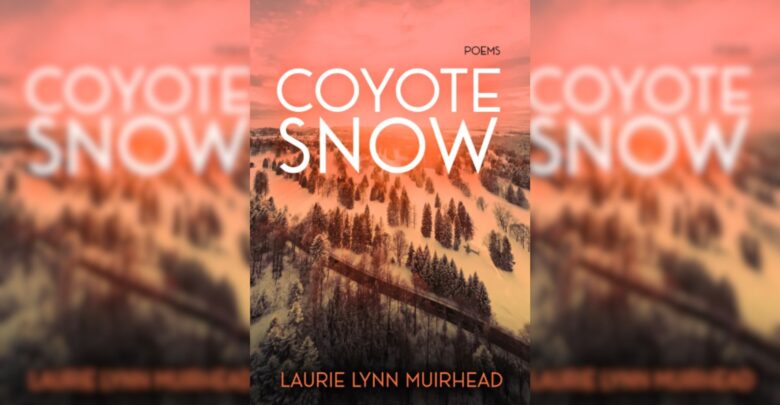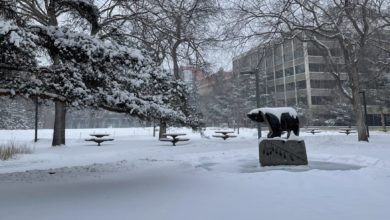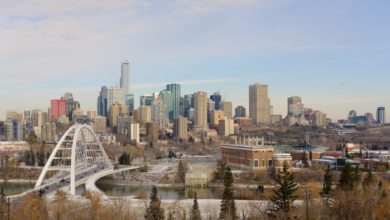Book Review: ‘Coyote Snow’ by Laurie Lynn Muirhead
Laurie Lynn Muirhead's poetry collection, Coyote Snow, s told with deep thought, attention to detail, and beautiful writing.
 Supplied
SuppliedCoyote Snow is a richly detailed, emotional collection of poems by Laurie Lynn Muirhead. Muirhead’s powerful descriptions will make readers love North-Central Saskatchewan just as much as she does. However, it ignores key perspectives on the Canadian prairie landscape.
Muirhead’s poetry collection describes the seasonal cycle of her life on a North-Central Saskatchewan ranch. The poems flow together like a story, starting with the harshness of winter, transitioning into summer relief and autumn anxiety, and finally concluding with a more favourable presentation of winter and the many blessings it brings. There are “only two seasons,” she writes: “winter, and getting ready for winter.” She skillfully connects nature to her personal life, especially her marriage.
Throughout the collection she attentively describes beings in the natural world and their activities. And she expresses the emotions these interactions make her feel. The selection and description of these details was clearly done with care. Specifics such as “the musky scent / of expiration” during autumn shows Muirhead’s awareness of and sensitivity to her environment. Language like “hefty fist of freeze,” describing January, evokes both emotional and physical feelings.
Muirhead’s poetry is most impactful when she portrays non-human beings in the natural world as human. Animals, plants, a storm, and even the solstice are given traits typically associated with humans in western cultures. This shows Muirhead’s deep connection with the surrounding environment. She sees her fellow inhabitants within it as equals, rather than objects. This close relationship is further emphasized when she makes the feelings of personified beings her own, such as when her “voice is dry as scorched earth” during a drought. Somewhat contrastingly, the use of personification also demonstrates her isolation from fellow humans. Very rarely do we hear her describe humans other than her husband. Even her children are mostly absent from the narrative.
This tension between Muirhead’s love for the natural world and the ways in which it frustrates her is consistently apparent. Not only in winter, but also in summer, nature threatens her ranch and livelihood, through drought, storms, and the cold. It also affects her personal life. These economic stressors lead to strains in her relationship with her husband. Her understanding and capable description of this inconsistency is what makes Coyote Snow more than just a collection of nice poems about the Canadian prairie. It’s about how the land shapes us and reflects our everyday lives.
One thing that Coyote Snow lacked was a discussion of how humans shape, and often harm, the land around us. With climate change currently being one of the biggest concerns of scientists and the rise in cultural discussions surrounding the Anthropocene, the old narrative of western Canadian settlers being completely at the mercy of the elements is no longer effective.
Muirhead also never touches on the historical or current presence on Indigenous Peoples on the land she loves so much. The book’s publisher, located in Edmonton, does acknowledge on the copyright page that the book was published in Treaty 6 territory, though. Although discussing this presence is clearly not Coyote Snow’s purpose, the story would feel more authentic and relevant if Indigenous Peoples were at least considered, however briefly.
Coyote Snow reveals a world as beautiful as it is cold through Muirhead’s considerate descriptions of her surroundings and her clear love for the land. In addition, her nuanced portrayal of feelings of anticipation for summer, growing fear as winter comes closer, and a sense of gloom when it finally comes, will resonate with many residents, both urban and rural, of the northern and Central Canadian prairies.
However, Coyote Snow fails to account for the dangers nature faces right now. And, the critical presence of Indigenous peoples on the prairies is ignored, showing that the book presents a narrow view of the region it portrays. Coyote Snow does not tell the full story of the western Canadian prairie. But the story it does tell is told with deep thought, attention to detail, and beautiful writing. It is a story that makes one appreciate North-Central Saskatchewan, no matter how cold it might get.
Coyete Snow is set to release on November 10.




